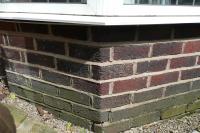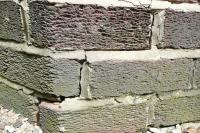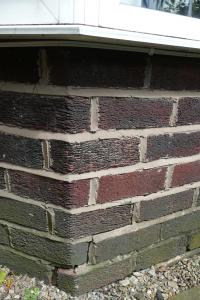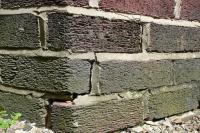We’d like to remind Forumites to please avoid political debate on the Forum.
This is to keep it a safe and useful space for MoneySaving discussions. Threads that are – or become – political in nature may be removed in line with the Forum’s rules. Thank you for your understanding.
The MSE Forum Team would like to wish you all a very Happy New Year. However, we know this time of year can be difficult for some. If you're struggling during the festive period, here's a list of organisations that might be able to help
📨 Have you signed up to the Forum's new Email Digest yet? Get a selection of trending threads sent straight to your inbox daily, weekly or monthly!
Has MSE helped you to save or reclaim money this year? Share your 2025 MoneySaving success stories!
House with slight structural movement - to buy or not to buy?
Comments
-
The flat my grandmother lived in (part of a very large Victorian house) had this sort of problem that got worse and worse until the bay window started sliding away from the rest of the house. They believed it was made worse by bomb damage in the war (the house next door but one was completely annihilated by a direct hit).
Eventually the whole bay had to be demolished/dismantled and rebuilt which I believe was a costly operation, especially to remake the original type of decorative stonework.
I'm just happy I live in a steel-framed house so it's never going to crack!Solar install June 2022, Bath
4.8 kW array, Growatt SPH5000 inverter, 1x Seplos Mason 280L V3 battery 15.2 kWh.
SSW roof. ~22° pitch, BISF house. 12 x 400W Hyundai panels0 -
If the house was just what I wanted and I could afford to fix any problems then I'd buy it. But if you're hoping to find an insurance company to pay for a problem that you know is looming then you've got no chance.I am the Cat who walks alone0
-
The flat my grandmother lived in (part of a very large Victorian house) had this sort of problem that got worse and worse until the bay window started sliding away from the rest of the house. They believed it was made worse by bomb damage in the war (the house next door but one was completely annihilated by a direct hit).
Eventually the whole bay had to be demolished/dismantled and rebuilt which I believe was a costly operation, especially to remake the original type of decorative stonework.
I'm just happy I live in a steel-framed house so it's never going to crack!
We don't think rebuilding the bay will cost as much because it has no decorative stonework. In fact, most of it is window, though I they're not exactly cheap. We have had a quote for replacing all the windows and it is well within our budget. We just haven't had the cost of rebuilding the brick work too.
If we can't get much reduction in the price, then we will walk away. But if we can get a reduction to below the asking price, it gives us a lot to play with in which to rebuild the bay and hopefully problem sorted. It is a house I know we will be happy in otherwise.0 -
fluffymuffy wrote: »If the house was just what I wanted and I could afford to fix any problems then I'd buy it. But if you're hoping to find an insurance company to pay for a problem that you know is looming then you've got no chance.
It is indeed and we can afford to fix the problems, especially if we can secure a reduction in house price in light of this issue arising last minute.
We do not expect the insurance company to pay for the problem, we are expecting to pay for it ourselves. What we are most concerned about is whether insurance companies will offer full insurance after we rebuild or fix the problem, or whether they use it as an excuse to put a black mark against the house because it had a problem. I often read their questions like "has there ever been a history of xyz" or "have any part of the house had to be underpinned" to which if you answer yes, they refuse insurance.0 -
We moved recently - to a grade II listed building - which has structural cracks. One area will collapse without some help in the future (don't know how long).
We get all our insurance through a broker - an old fashioned over the counter one. They didn't ask any questions about structure, or nearby trees, or anything really. Just the address.I am the Cat who walks alone0 -
fluffymuffy wrote: »We moved recently - to a grade II listed building - which has structural cracks. One area will collapse without some help in the future (don't know how long).
We get all our insurance through a broker - an old fashioned over the counter one. They didn't ask any questions about structure, or nearby trees, or anything really. Just the address.
:eek::eek::eek::eek:#6 of the SKI-ers Club :j
"All that is necessary for evil to triumph is for good men to do nothing" Edmund Burke0 -
I hope these uploads works, but I have photos of the cracks which we think we hope we can fix:



 0
0 -
{In my opinion...} ...It's not the cracks that matter. It's not the subsidence that matters... It's the fact the insurance companies are refusing insurance that matters. You can't be sure they ever will insure, and you can't be sure anyone will buy your house from you.
The last house I had was ancient, built in 1300's, and was falling apart at the seams. But it wasn't listed as subsidence, and was fine for insurance (although cost an arm and both legs because of age & grade1 listing). The one previous to that I bought knowing that part of it was probably subsiding a little. It was a new extension on an old property, and the extension looked poorly built, and had cracks straight through bricks. I didn't even get a survey done. I had a builder (who the sellers just took for a surveyor) go through the house, mainly pricing up a rebuild of the extension. Extension was, indeed, built with improper foundations, so down it came. However, at no point was an insurance company involved.
In my opinion, those cracks are not bad. They aren't even evidence of subsidence. I'd term them spread, and suggest they might be caused as much by water damage as anything else - or the nearby tree you mentioned. HOWEVER.. no insurance company would term that as subsidence either, which makes me worry what the current owner has previously approached the insurance company with, or what neighbouring owners have experienced.
I would still walk, if there is any problem getting insurance.
Alternatively, approach a new surveyor, and ask if he will do a survey for the purpose of insurance. If he will state the house does not have subsidence, you might find things easier with insurance... but I'd still wonder if there was any other issue elsewhere.0 -
In my opinion, those cracks are not bad. They aren't even evidence of subsidence. I'd term them spread, and suggest they might be caused as much by water damage as anything else - or the nearby tree you mentioned. HOWEVER.. no insurance company would term that as subsidence either, which makes me worry what the current owner has previously approached the insurance company with, or what neighbouring owners have experienced.
I would still walk, if there is any problem getting insurance.
Alternatively, approach a new surveyor, and ask if he will do a survey for the purpose of insurance. If he will state the house does not have subsidence, you might find things easier with insurance... but I'd still wonder if there was any other issue elsewhere.
Thanks for your post. I should make it clear that most insurers are refusing us insurance because we are being honest about our answers to questions asking if there are signs/any history/evidence of 'subsidence, heave or landslip'. Many are now adding 'any structural movement' to that list, which we can't lie about. Insurance companies are stopping us as soon as we answer this, before they even get to check the address of the property. So I don't think the property has been blacklisted in anyway (yet!).
Our surveyor would not write a survey stating that the house does not suffer from subsidence. He used the term 'very minor structural movement' instead and wouldn't be drawn in to telling us whether this was subsidence or not. I suspect this is because it is all a matter of debate and not a clear cut answer. He was probably trying to help us by not using the word subsidence in the survey at any stage.
I think we will walk if we can't get at least a few insurers to offer us cover. I suspect the vendors will hope that they find a buyer who either doesn't have a survey done or get a simple valuation report done. All very frustrating!0 -
I am (or was, not sure yet) buying a house opposite my house.
I only had a valuation survey done as I did not expect any problems due to fact I live in same street with a similar house.
I received contracts to sign from my solicitor with vendors property history checklist attached.
This has revealed that the vendor had put in a claim for subsidence about 7 years ago due to cracks in exterior wall appearing suddenly plus half inch gap between floor and wall on the inside.
There is also a report by Insurers architect attached which confirms that the movement was NOT caused by subsidence. It says that the cause could be either a chemical reaction on the concrete base which has expanded and pushed the wall OR poor workmanship in that location,
The report also states that there is a small leak from main drains that needs repairing to avoid further damage.
The report advises that small piece of concrete base should be grubbed out to allow it to expand and the walls made secure.
The vendor assures me that the all recommended work was done BUT does not have proofs due to fact the company that did the work is no longer in business and the architect co. said it does not keep records for that length of time?
Should I buy and is this classed as serious damage?
The Report classes this as minor structural defect.0
This discussion has been closed.
Confirm your email address to Create Threads and Reply

Categories
- All Categories
- 353K Banking & Borrowing
- 253.9K Reduce Debt & Boost Income
- 454.8K Spending & Discounts
- 246.1K Work, Benefits & Business
- 602.2K Mortgages, Homes & Bills
- 177.8K Life & Family
- 260K Travel & Transport
- 1.5M Hobbies & Leisure
- 16K Discuss & Feedback
- 37.7K Read-Only Boards


